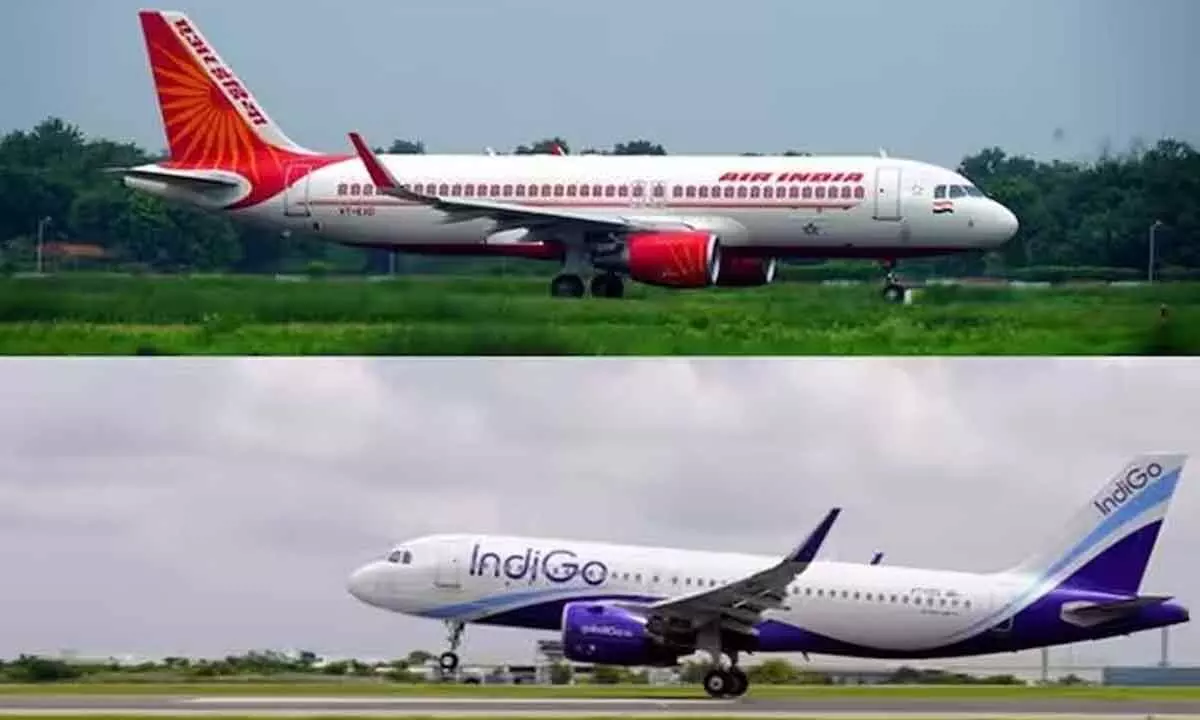Indian domestic aviation industry is bound to expand
Averaging 8.7% growth annually, India’s domestic airline capacity has historically grown faster than the international capacity
image for illustrative purpose

The boom of India's domestic aviation is likely to continue in 2024-25 with air traffic expected to rise by 8-11 per cent in the ongoing financial year to reach around 418 million passengers, rating agency ICRA said in its latest presentation.
Pick-up in leisure and business travel, improving connectivity to newer destinations in the domestic segment, and the continued uptick in international travel are expected to drive the growth, it said.
Domestic passenger traffic in FY24 had surpassed pre-pandemic levels, reaching 376.4 million, marking a significant 15 per cent YoY increase.
Airline capacity in India will reach 230m departing seats in 2024 - almost double where it was back in 2014 - a sign that capacity growth is now back on track post-pandemic. In India, domestic airline capacity has historically grown faster than international capacity, averaging 8.7% growth annually (between 2005 and 2024) compared to international growth of six per cent annually. This is largely due to historic restrictions around the ability of foreign-based carriers to operate internationally from India; for a long time there was a requirement for carriers to operate in the domestic market first, before being permitted to operate international services.
The potential for India in the coming decade is essentially two-fold – there is considerable opportunity for the domestic market to continue to grow and serve the world’s largest population more equitably than it currently does, and for the outbound services to really take off.
Indigo, India’s home-grown low-cost carrier (LCC), had 52% of seats in April 2024. Their share of the domestic market is the largest, with 61% of seats, whilst internationally Indigo has just 17% of the market (in capacity terms) and is second to Air India, which operates 24% of capacity - when we include Air India, Air India Express and Vistara. However, internationally other carriers provide more than half of the country’s international capacity.
When we look at this by Indian domiciled carriers versus overseas-based carriers, the split is clear-66% of seats are still operated by foreign carriers.
Compared to a mature aviation market like the USA, where there are three seats per head of population in the domestic market, India remains a long way behind with just 0.13 seats per head of population. It is also considerably behind China, which is approaching 0.5 seats per head of population.
India has unquestionably yet to fully realise its aviation potential; air capacity is just one-fifth of that in the United States, and almost four times smaller than China’s.
Whilst Indigo and Air India have very significant aircraft orders – and Indigo cemented their international expansion plans with the mid-April announcement of a wide-body order of 30 A350-900 aircraft - the addition of these at the country level will still only result in a fleet of just over 3,000 aircraft, while China’s fleet is currently over 4,000 and it keeps growing.
The focus of orders is largely on short-haul narrow-body aircraft for now. However, Air India has plans to upgrade its long-haul fleet and improve the passenger experience in key markets, with 34 A35-900/1000 variants on order to add to their existing four A350-900s.
Although Jet Airways is insolvent, there is still an unfulfilled aircraft order and hope that the carrier will restart under new ownership.
There are international ambitions from India’s biggest carriers, and the disparity between domestic and international services when we compare India to China and the USA is interesting. India's ratio of international destinations to domestic is 0.6:1, whilst China and the USA have a smaller ratio - this is largely down to Indian domestic routes being so low in number.
The missing piece of the jigsaw here is the GDP, especially GDP per capita. Aviation growth is typically driven by economic growth, with traffic often growing at 1.5-2 times the rate of GDP. In a mature economy such as the USA, GDP per capita is very high, averaging $76,400 in 2022, although this will not be evenly distributed across the country’s population, with the average American making $59,400 in 2023.
In 2024, China’s GDP per capita is $12,720, whilst in India GDP per capita remains very low at just $2,410. The Indian middle class is reportedly growing, and GDP per capita is increasing – up from $1,500 in 2014 – the pace of growth in Indian aviation will continue to be linked to the economy as it transitions from a developing country.
With projections that India’s GDP will continue to grow at between 6.5 and 7 per cent each year for the rest of this decade, the future looks bright.

